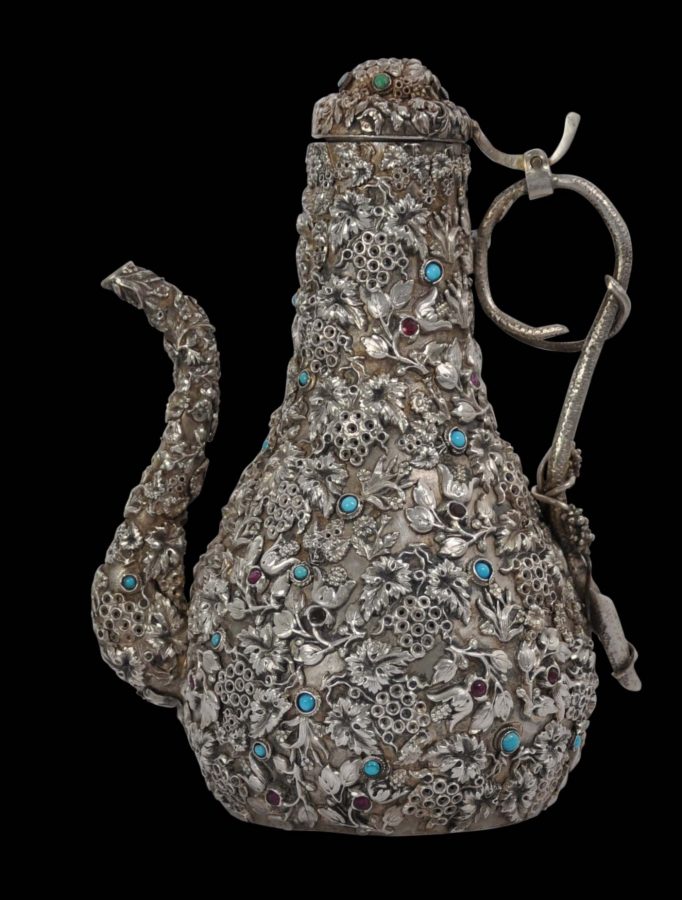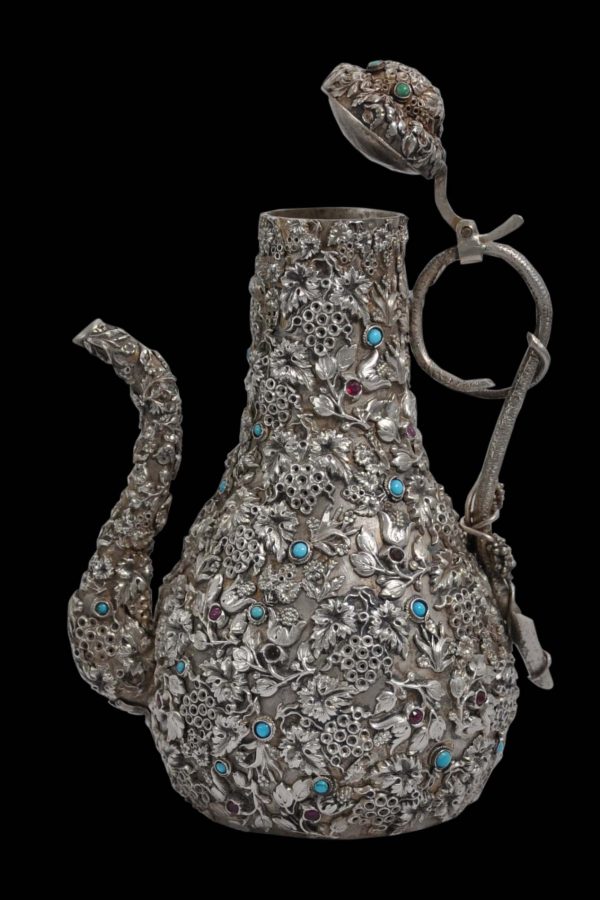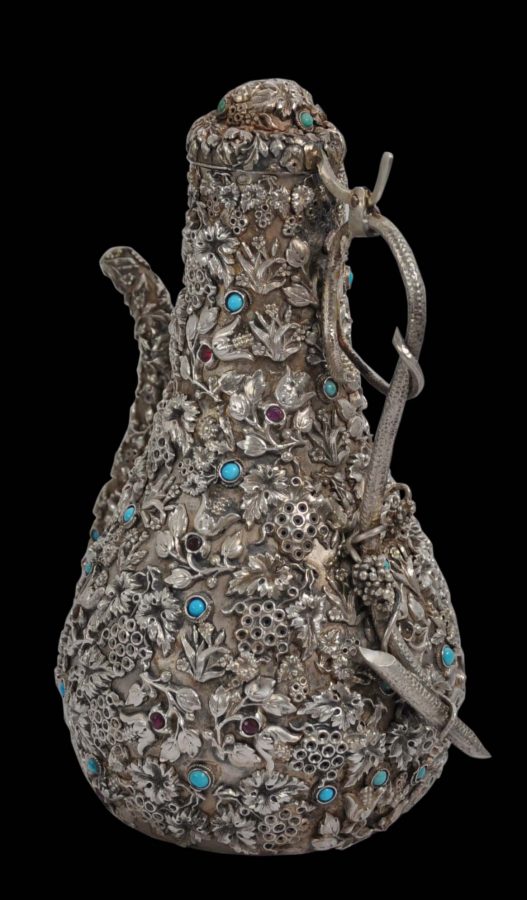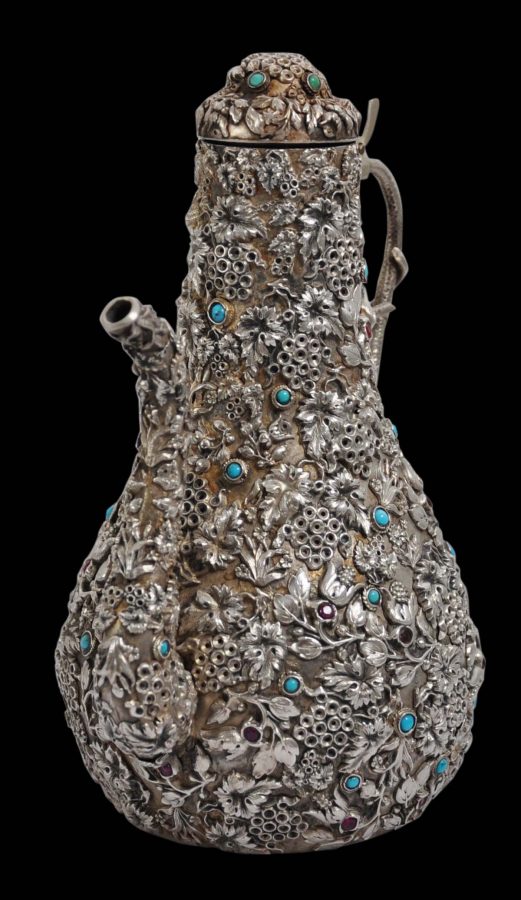This unusual ewer is from the Ottoman empire, and most probably from Turkey itself. It is of pear or tear shape, with an ‘S’-shaped spout, and a vine-like curling silver handle. The lid is hinged and domed.
The remarkable aspect of this ewer is that it is completely covered with silver applique work in the form of vine leaves, grapes, and a variety of flowers, all in high relief. The designs are inset with several dozen red glass and turquoise-coloured cabochons. The floral forms are not unlike those seen on Iznik tiles, and the practice of encrusting vessels with metal overlay and stones has a long precedent in Ottoman decoration.
The ewer sits on a flat, plain base, and the handle has several silver bunches of grapes in its lower section, to emphasise the vine-like aspect of the handle.
The lid is domed and is complete; it was never intended to have a finial.
The ewer does not have a maker’s mark, but does have French import marks – these are small, impressed ‘Swan’ marks on the rim, lid and handle.
The ‘Swan’ mark was introduced on 1st June 1864, it was used on silver articles, old and new, imported into France from countries without Customs Conventions. Its use was discontinued on 1st June 1893 after which it was stipulated that all imported gold and silver should comply with the same conditions as those articles manufactured in France.
The ewer is in fine condition.
References
Artan, T. et al, Palace of Gold & Light: Treasures from the Topkapi, Istanbul, Palace Arts Foundation, 2000.








